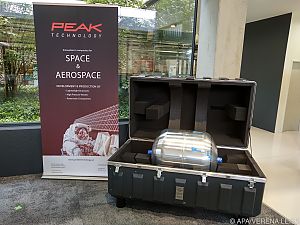Fuel tanks for ESA's Galileo satellites come from Holzhausen

On the occasion of the signing of the contract on Wednesday, State Secretary Magnus Brunner (ÖVP) emphasized the importance of space technology for the business location, which is often underestimated. Because what started in Grebner's garage is now a company with 125 employees, 13 million euros in sales and 97 percent export quota. Among other things, the company manufactures lightweight components and high-pressure accumulators for motor sports and for the aerospace industry, which already accounts for two-thirds of sales.
Most recently, the company has produced heat shields for the Vega rockets, for example, it is jointly responsible for an energy-autonomous 5G weather buoy anchored in the middle of Lake Traunsee, and it is aiming for a collaboration with the German aerospace start-up Isar Aerospace, which is currently collecting investor funds on a large scale in order to be able to produce its own launch vehicle. The latter is an "unlaid egg," Grebner said, but the contract he has now won is much more concrete. The €2 million order from Airbus and ESA is not huge, but it is a priceless image boost.
New generation more accurate and more reliable
The new generation of Galileo satellites, which are used for navigation, is to be significantly more accurate and more interference-free than before, Grebner explained. A satellite is first launched into its first orbit by the Ariane 6 launcher and then has to find its designated orbit at an altitude of 23,000 kilometers by means of propulsion. This maneuver consumes about 70 percent of the fuel. The rest will be used to keep the satellite in position for the next 15 years, he explained.
The fuel tanks for this come from Holzhausen. They are made of aluminum "like a Coke can," are sheathed in carbon fiber and each hold 165 liters (250 kilograms) of xenon. According to Grebner, the components are quite delicate, because: On a satellite, all parts are duplicated, except the tank. "If that causes problems, we don't have a satellite navigation system." It is "certainly the most complex and important order" for his company so far, he stressed. The first delivery is scheduled for the middle of next year, with satellite launch in 2024.
